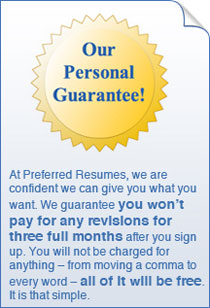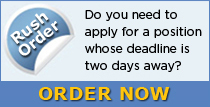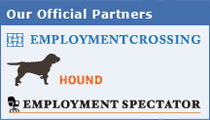Highlighting Your Skills and Abilities on Your Resume
|
|
 | |
| Keep a record of resumes sent and when and where you sent each one. |
Adding a profile section to give a busy employer a quick snapshot of your overall experience is very helpful. Profile statements are usually one paragraph long and located at the top of the resume, usually under the objective. Sometimes called statements of qualifications, they summarize your accomplishments and list transferable skills you’ve acquired from previous jobs.
Below are two examples of good profile statements:
- ''Dynamic, results-oriented, talented professional who can work under pressure and meet deadlines. Accustomed to working with a team. Proven leadership and troubleshooting skills. Fully knowledgeable in all aspects of design, cost control, and production. Excellent interpersonal and analytical skills.''
- ''Experienced in successful management of diverse groups of people. Ability to grasp new ideas and integrate them into desired results. Proven history of improving operations and increasing profitability. Easily comprehends and solves technical problems. Well-developed skills in negotiation and people management.''
Potential employers will read the space directly below your name and contact information first. You will want to pack as much relevant information as you can into your profile, sometimes even foregoing the Job Objective so that your skills and unique abilities are the first things the employer sees.
 | |
| Searching for a job and preparing a resume go hand in hand. |
Find out ahead of time everything you can about the company you are applying to so that you can tailor your resume to highlight how that company will benefit by having you as an employee. Ways to find out about a company are easier than ever with the Internet. Do a search on the company, read all about it, change your profile accordingly, and submit a resume that matches their vision, mission statement, and job needs.
Some things to do prior to writing your resume:
1. List your skills, abilities, and strengths. Don't forget about your hobbies and interests. This list is just a pool from which you can draw.
2. List all of your previous job training and the types of skills you already have.
3. Ask yourself what types of skills would be needed to do the job you are applying for and see if they match your skill set or come close.
This is your personal inventory so when you are building or adjusting your resume for various job opportunities, you can pull out the skills that will benefit that specific job and its requirements.
As you change your resume, save it with titles that are descriptive and dated. For instance, if you apply for an administrative assistant position on August 15, 2008, at Commerce Bank, save the resume as "CommBank-8-15-08-AdmAsst." This way, if you get an interview, you will be able to review which resume you sent and the strengths and abilities you highlighted in order to get the interview.
While many people are intimidated by the thought of starting a resume, it can be a fairly straightforward task if some thought is put into it prior to starting. The resume profile should be written carefully as it is the best way to sell yourself quickly to a prospective employer. Drawing from your previously written list of skills and abilities will go a long way towards building a great profile that gets noticed and a resume that gets you that job interview.




